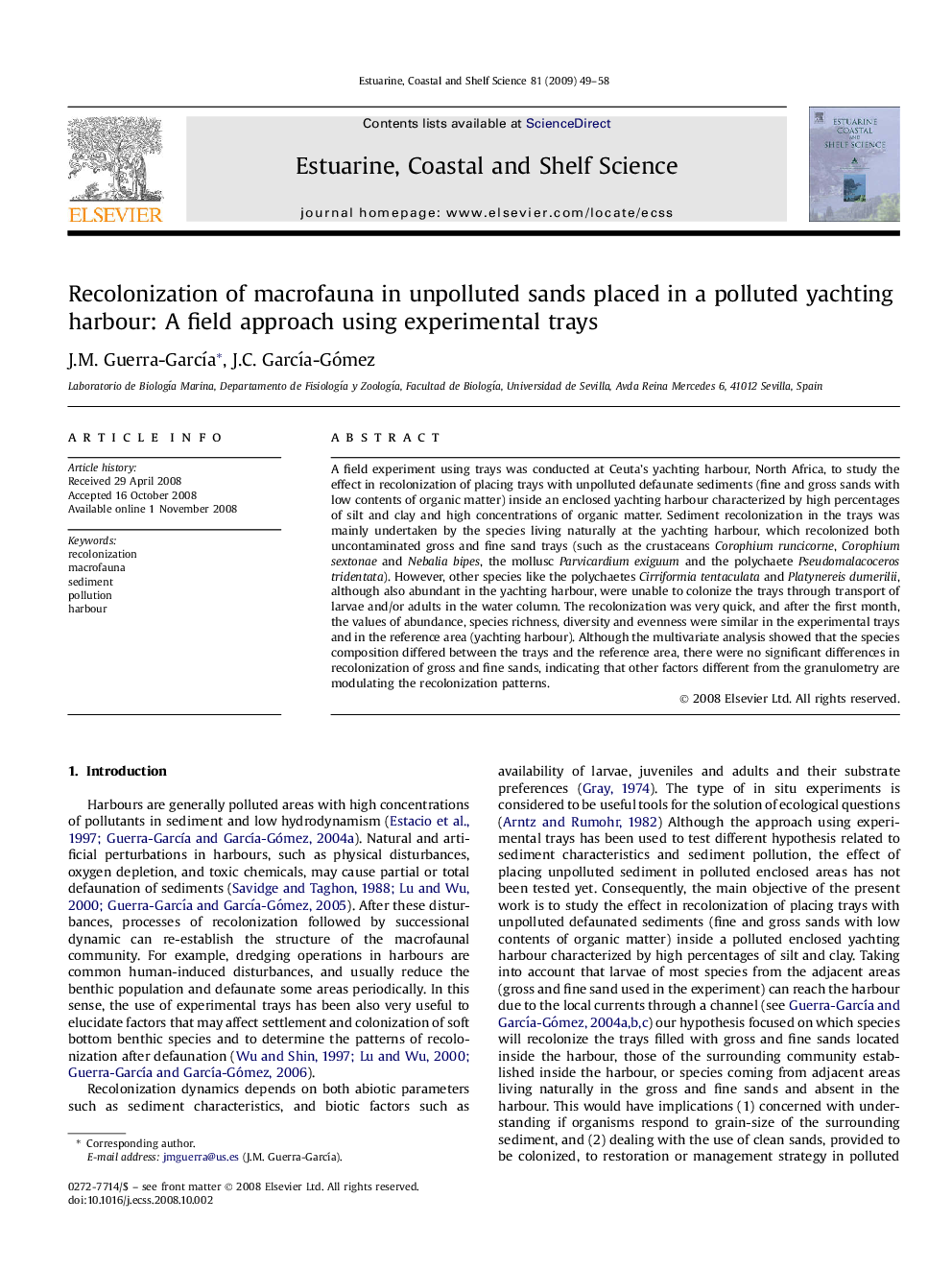| Article ID | Journal | Published Year | Pages | File Type |
|---|---|---|---|---|
| 4541317 | Estuarine, Coastal and Shelf Science | 2009 | 10 Pages |
A field experiment using trays was conducted at Ceuta's yachting harbour, North Africa, to study the effect in recolonization of placing trays with unpolluted defaunate sediments (fine and gross sands with low contents of organic matter) inside an enclosed yachting harbour characterized by high percentages of silt and clay and high concentrations of organic matter. Sediment recolonization in the trays was mainly undertaken by the species living naturally at the yachting harbour, which recolonized both uncontaminated gross and fine sand trays (such as the crustaceans Corophium runcicorne, Corophium sextonae and Nebalia bipes, the mollusc Parvicardium exiguum and the polychaete Pseudomalacoceros tridentata). However, other species like the polychaetes Cirriformia tentaculata and Platynereis dumerilii, although also abundant in the yachting harbour, were unable to colonize the trays through transport of larvae and/or adults in the water column. The recolonization was very quick, and after the first month, the values of abundance, species richness, diversity and evenness were similar in the experimental trays and in the reference area (yachting harbour). Although the multivariate analysis showed that the species composition differed between the trays and the reference area, there were no significant differences in recolonization of gross and fine sands, indicating that other factors different from the granulometry are modulating the recolonization patterns.
